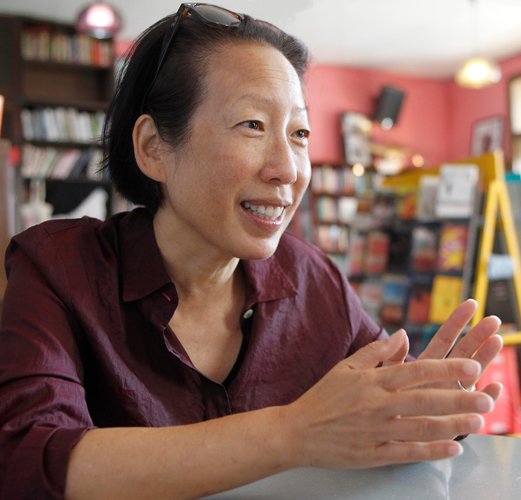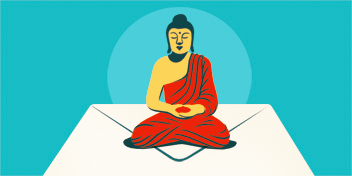We in the West are quite concerned these days with how to make the dharma authentically Western. But caution please, folks. Before we start inventing a new flavor of Buddhism to suit Western palettes, it is important to look closely at the implicit assumptions we are bringing to this project.
To start, we might examine more closely our underlying picture about the nature of cultural difference. It looks something like this: Westerners tend to think of Asians as people basically like us who just have different customs—they hold different beliefs and have different ways of doing things. We tend to assume that Asians experience self-identity in the same way we do—that they are the same equation, if you will, just with different values for the variables. But what if in fact Asians aren’t basically like us at all? What if the structure of the self—or call it the ego or the personality—is essentially different across cultures? Wouldn’t this give us pause?
And if we are fundamentally different in this sense, how could we even know?

One way would be to take into account firsthand reports from people who straddle both worlds. So I was intrigued to come across Wesley Yang’s review of novelist Gish Jen’s new book Tiger Writing: Art, Culture, and the Interdependent Self, which explores narrative style differences between Asian and Western literary traditions. (You can hear her discuss the main themes of her book in a three-minute video here.) She traces the source of these differences to deeper differences in the fundamental structures of Asian and Western self-identity.
Jen is a second generation Chinese-American who speaks from her experiences navigating two distinct kinds of selves—an Asian identity shaped at home by her immigrant parents and a Western identity acquired outside the home growing up in Scarsdale, New York. At home, she learned an outward-looking sense of self, one acutely aware of her role in society, her duties, her obligations—she calls it “interdependent.” But outside the home, the self-identity she was encouraged to develop was inward-looking and “independent.” Her task as an American youth was to discover what it was she really wanted and to articulate what made her unique. As it turns out, those were two truly different projects.
Because she is a novelist, Jen is particularly attuned to the ways that the structure, meaning, and purpose of narrative show up differently against the backdrop of the two kinds of selves. As reviewer Yang reports, Jen was struck when she read her father’s memoir:
The account…offered few details of his own grandfather’s “appearance or personality or tastes—the sorts of things we in the West might include as a way of conveying both his uniqueness and his importance as a figure in the narrative.” It instead described at great length the number of doors in the house where her father grew up and whether they were open or shut—concentrating not on his individual self, but on the context within which that self was situated, and by which it was constrained. The world he describes is not, as Jen puts it, “a modern, linear world of conflict and rising action, but rather one of harmony and eternal, cyclical action, in which order, ritual and peace are beauty, and events spell, not excitement or progress, but disruption.”
…Jen’s father had been born into a culture whose parenting style explicitly intends the humbling of the individual self in favor of the needs of the broader collective. (Parents engage in short, selective conversation with their children, emphasizing “proper behavior, self-restraint and attunement to others.”) What this “low elaborative” parenting style aims at instead is the creation of an “interdependent self,” defined not by its sense of inner autonomy, but by its sensitivity to the social roles it must play depending on the context in which it finds itself.
The scholars of cross-cultural cognition, who reject the universality of Western models of the mind, maintain that this emphasis on social context translates into a measurable divergence in how Easterners and Westerners literally see the physical world. Jen cites an experiment in which a group of old Singaporean men were shown images of a changing figure on an unchanging background. The men were so fixated on the background at the expense of the figure that fMRI readings failed to register any change in perception when the figure changed from a bucket to a guitar to a vacuum cleaner to a house plant.
Decontextualizing and isolating are Western values; they are axiomatic in scientific practice and foundational in Western individualism. As such, they shape our mode of being and our self-identity. Indeed—in just the manner of the Singaporean men in the fMRI experiment—these values translate into how we literally see the physical world. As a consequence, when we turn to our task of making the dharma authentically our own, we are perhaps too quick to pull it out of its Asian context.
We have been largely insensitive to how intimately interwoven the dharma is with the kind of Asian psychic space in which it developed. Andrew Cooper discussed this point with American Buddhist teacher Lewis Richmond in “The Authentic Life” three years ago in Tricycle:
Cooper: There is a subfield of anthropology, often called psychological anthropology, that examines the specific ways the ego, the personality, the sense of being a subject, are constructed in different cultural settings. When one reads some of the literature, what is fascinating is seeing the degree to which the very sense of subjectivity is culturally formed. It could be a long time before we grasp the implications of this for translating Buddhism across cultures.
Richmond: I think it may well be that many practices developed in Asia might not be psychologically beneficial for Westerners for just that reason. When I left Zen Center, I felt like I had a bad case of spiritual indigestion, as though I had taken in something that I couldn’t fully break down. This idea of the ego structure being significantly conditioned by culture probably has a lot to do with this. It might also speak to a common experience among many longtime practitioners I know, including myself: the discrepancy between what the tradition says should happen as a result of practice and the reality of what actually happens.
If, as Jen maintains, narratives read so differently against the backdrop of Asian and Western minds, so too could meditation practices read differently. The way Westerners interpret meditation in terms of inner experiences and psychology, for instance, might be simply the result of how we as Westerners are constructed—as interior-oriented and individualistic. But maybe what we need from Buddhism is not simply those elements that confirm the interior self but those that go against the grain of how we view the world.
Ironically, the very Buddhist teachings we are so concerned with transmitting to the West emphasize interdependence as the true nature of things. Seeing ourselves or the objects of our world as isolated or independent is considered ignorance according to the very teachings we are busily removing from their context and liberally putting into the service of Western individualism. I suggest we all take a deep breath, pause, and then go read Gish Jen’s book.
With support from the John Templeton Foundation, Tricycle’s Buddhism and Modernity project is initiating a conversation between Buddhists and leading thinkers across the humanities and social sciences. Tricycle is exploring how perspectives drawn from critical theory about the nature of religion, culture, science, and secularism can shed light on unexamined assumptions shaping the transmission of Buddhism to modernity. This project offers Western Buddhists new ways of thinking about their spiritual experiences by demonstrating how reason can be used as a tool to open up—rather than shut down—access to traditional faith.
Thank you for subscribing to Tricycle! As a nonprofit, we depend on readers like you to keep Buddhist teachings and practices widely available.
